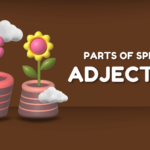Verbs are fundamental components of language, providing the necessary action or state of being in sentences. This guide aims to shed light on the definition, types, and examples of verbs, unraveling their importance in effective communication.
What is a Verb?
In its simplest form, a verb is a word that denotes an action, occurrence, or state of being. Verbs play a vital role in conveying the dynamics of a sentence and are indispensable for articulating the details of who, what, when, where, why, and how.
What are the types of Verb?
Verbs can be categorized into several types based on their functions within a sentence. Each type serves a distinct purpose, contributing to the overall structure of language. Here are some key types of verbs:
- Action Verb
- Linking Verb
- Infinitive Verb
- Phrasal Verb
- Transitive Verb
- Intransitive Verb
- Regular and Irregular Verb
Action Verb:
Action verbs express either physical or mental actions. They bring vitality to sentences by illustrating what the subject is doing.
Example: run, swim, think, and create.
Linking Verb:
Linking verbs connect the subject to a subject complement, usually an adjective or noun. Common linking verbs include be, become, seem, and appear.
For Example: “The situation seems dire.”
Helping Verb:
Auxiliary verbs assist the main verb in a sentence, conveying nuances such as tense, mood, and voice.
Example: is, am, are, have, and will. In the sentence “She is running,” “is” is the auxiliary verb.
Modal Verb:
Modal verbs express possibility, necessity, or ability.
Example: can, could, will, would, may, might, shall, and should. For instance, “You can join us for dinner.”
Transitive Verb:
Transitive verbs require a direct object to complete their meaning. They act upon something or someone.
Example: “He ate the cake.” Here, “ate” is the transitive verb, and “cake” is the direct object.
Intransitive Verb:
Intransitive verbs do not require a direct object to make sense. They often convey movement or an action that doesn’t transfer to an object.
Example: “She laughed.”
Examples and Comparison Table:
For better understanding, let’s compare and contrast these verb types using tables:
| Verb Type | Definition | Example |
|---|---|---|
| Action Verb | Express physical or mental action. | “The dog runs in the park.” |
| Linking Verb | Connect the subject to a subject complement. | “The flowers are beautiful.” |
| Auxiliary Verb | Assist the main verb with tense or mood. | “She has completed the project.” |
| Modal Verb | Express possibility, necessity, or ability. | “You can solve the puzzle.” |
| Transitive Verb | Require a direct object to complete meaning. | “He ate the delicious cake.” |
| Intransitive Verb | Do not require a direct object to make sense. | “She laughed at the joke.” |
What are the key types of verbs and their functions?
Verbs, essential in sentence structure, have distinct roles. Action verbs depict physical or mental actions (e.g., run), linking verbs connect subjects to complements (e.g., seem), helping verbs aid main verbs (e.g., is), modal verbs express possibility (e.g., can), transitive verbs need objects (e.g., ate), and intransitive verbs don’t (e.g., laughed).
Frequently Asked Questions (FAQs):
1. What exactly does a verb do in a sentence?
A verb is like the action hero of a sentence, telling us what’s happening or describing the state of the subject.
2. Can you give me an example of a linking verb and explain how it works?
Sure! In a sentence like “The situation seems dire,” the linking verb “seems” connects the subject “situation” to the description “dire,” expressing its state.
3. How do those helper verbs help in a sentence?
Those helper verbs, or as we call them, auxiliary verbs, team up with the main verb to tell us about things like when it happened, the mood, or the voice. For instance, in “She has completed the project,” “has” is the helper verb.
4. What sets transitive verbs apart from intransitive ones?
Transitive verbs need an object to make sense; they do something to someone or something. Intransitive verbs don’t need an object. Think “He ate the cake” (transitive) vs. “She laughed” (intransitive).
5. Can a verb be both transitive and intransitive?
Absolutely! Some verbs are flexible and can switch roles depending on the situation. For instance, “The cat sleeps” (intransitive) and “I sleep eight hours a night” (transitive).
6. What’s the deal with action verbs vs linking verbs?
Action verbs are the go-getters, showing some action, while linking verbs are more about connecting the subject to a description, like an adjective or noun, revealing a state of being.
Conclusion
In a conclusion, verbs are like the backbone of sentences. Knowing the different types and what they do helps us put together sentences that make sense. Whether it’s a verb showing action in a story or one linking things together, verbs are super important for making our words clear and expressive. They’re like the secret sauce that makes our communication awesome!


